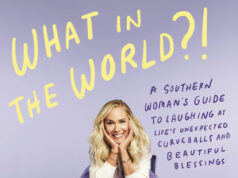Sight-Readings
by Elizabeth Hardwick
(Random House)
Elizabeth Hardwick was born and raised in Lexington, Kentucky and received her master’s degree from the University of Kentucky before going on to Columbia University and becoming an integral part of the “New  York Intellectuals” of the 1940s. Having written for the Partisan Review and eventually founding the New York Review of Books, she is a preeminent woman of letters. This latest collection of urbane, often funny, and penetrating essays is ample evidence. From the standpoint of her hometown and native state, we will be forgiven if we feel the strong urge to cheer as she continues her brightly starred and endlessly interesting career.
York Intellectuals” of the 1940s. Having written for the Partisan Review and eventually founding the New York Review of Books, she is a preeminent woman of letters. This latest collection of urbane, often funny, and penetrating essays is ample evidence. From the standpoint of her hometown and native state, we will be forgiven if we feel the strong urge to cheer as she continues her brightly starred and endlessly interesting career.
The essays collected in Sight-Readings: American Fictions (Random House, 1998), by renowned author and critic Elizabeth Hardwick, share a connective, elegant narrative voice which makes sense of tumult in a sane manner. The voice, in timber and pacing, may remind any reader of Nick Carraway in The Great Gatsby and the comparison to a fictional narrator is appropriate. Hardwick’s essays themselves combine the best literary volatility with a remarkably achieved, insightful and inventive critical examination.
The essays are grouped under five thematic sections which include Old New York, Fictions of America, and Americans Abroad. They explore the work and lives of American writers from Edith Wharton to Nadine Gordimer, with difficult pieces on John Updike and Phillip Roth, and illuminating new considerations on Vachel Lindsay and Margaret Fuller. In each, her even-handed and balancing prose weaves biographical narrative with detailed explorations of the authors’ work to an effect that greatly outshines many contemporary biographers, “the quick in pursuit of the dead,” as she writes of Katherine Anne Porter. Indeed, Biographies is a particularly strong section and her sharpest criticism is reserved for ineffective lives of authors whose life and art she brilliantly engages.
Hardwick often creates a touchstone in an essay that informs the piece as a whole and acts as a base around which new information and insights emanate. It can be as simple as a central image, such as the naked stage set of Edith Wharton’s Manhattan, “nameless, bare as a field, stripped of its byways, its fanciful, fabricated, overwhelming reality.” In yet other pieces the subject and their work inspire a larger discussion, such as her essay on Norman Mailer which examines the technique of oral biography and its seemingly necessary emphasis on quantities of tape and yet more tape: “To ponder the field, scan the prospect of effortless remembering and remarking, opens up a prodigiousness on the loose, a monumentality of retailed playback.”
Hardwick’s essays on John Updike and Philip Roth are more difficult because of the absence of such an aforementioned touchstone, or a more general argument. The emphasis is decidedly on the specifics of the authors’ work and thus the essays’ pitch is more enclosed. A reader who knows little to nothing about Djuana Barnes will come away from Hardwick’s piece “The Fate of the Gifted” with a splendid introduction to this lesser known American author; while the essays on Updike and Roth, authors whose work is far better known, focus on Hardwick’s analysis.
-Annie Wedekind







